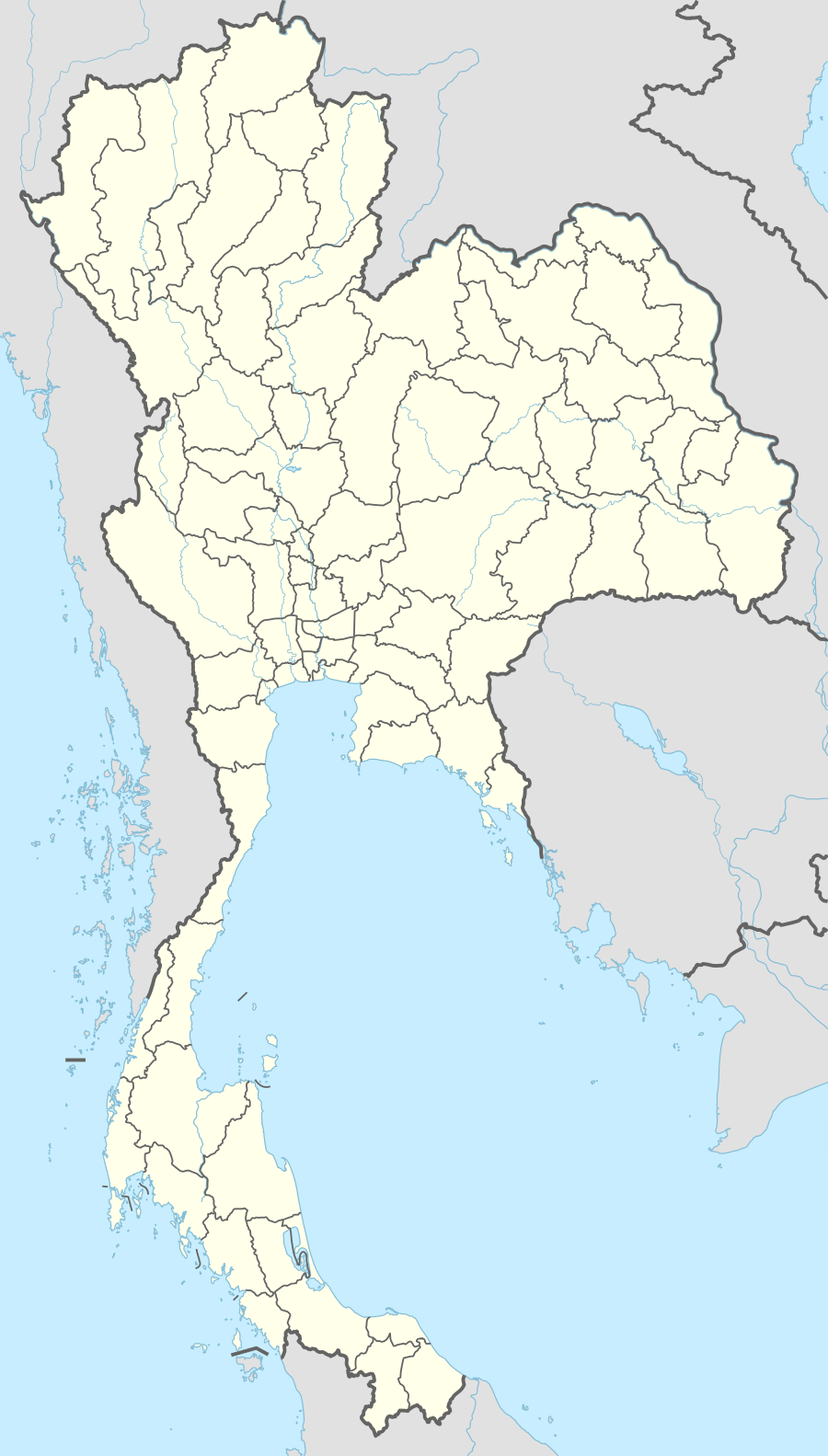Pak Kret
| Pak Kret ปากเกร็ด | ||
|---|---|---|
| City Municipality | ||
 | ||
| ||
 Pak Kret | ||
| Coordinates (municipality office): 13°54′45″N 100°29′52″E / 13.91250°N 100.49778°ECoordinates: 13°54′45″N 100°29′52″E / 13.91250°N 100.49778°E | ||
| Country | Thailand | |
| Province | Nonthaburi | |
| District | Pak Kret | |
| Settled | c. 18th century | |
| Incorporated | 1 Jan 1992 | |
| Government | ||
| • Mayor | Wichai Bandasak | |
| Area | ||
| • Total | 36.04 km2 (13.92 sq mi) | |
| Population (Dec 2010)[1] | ||
| • Total | 178,907 | |
| • Density | 5,000/km2 (13,000/sq mi) | |
| Website |
www | |
Pak Kret (Thai: ปากเกร็ด) is a city (thesaban nakhon) in Nonthaburi Province, Thailand. It lies in the Central Thai plains on the east bank of the lower Chao Phraya River, bordering Bangkok to the east, Nonthaburi City to the south, and Pathum Thani Province to the north. It is part of the Bangkok Metropolitan Region megalopolis. With a registered population of 178,907, Pak Kret is the third most populous city (nakon) in Thailand.
History
The Pak Kret area has been inhabited since at least the 18th century, under the rule of the Ayutthaya Kingdom. The portion of the Chao Phraya River to the west of Pak Kret city centre was excavated c.1721–22 to bypass a bend in the river, forming the island of Ko Kret. The settlements on the bank of the bypass canal and at its mouth became known as Ban Tret Noi (บ้านเตร็ดน้อย) and Ban Pak Tret Noi (บ้านปากเตร็ดน้อย), meaning village on the lesser bypass and village on the mouth of the lesser bypass, respectively (the "greater bypass" is further upriver in what is now Mueang Pathum Thani District.) Many ethnic Mon communities settled in the area during the Ayutthaya to early Rattanakosin periods.
Pak Kret was established as a sanitation district (sukhaphiban) on 31 August 1955. It covers the portion of Pak Kret District east of the river, namely the areas of Pak Kret, Bang Phut, Ban Mai, Bang Talat, and Khlong Kluea Subdistricts. It was incorporated as a commune municipality (thesaban tambon) on 1 January 1992 and was later upgraded to town and then city status on 5 February 1996 and 20 April 2000.[2] As Bangkok rapidly expanded during the late 20th century, so too did Pak Kret, its paddies and orchards being converted to housing estates and other residential areas.
Geography
Most of Pak Kret is low-density residential development. The city centre, sometimes known as Pak Kret Market, lies on the east bank of the Chao Phraya, at the northern branching between the old river course and the new bypass, across from Ko Kret. The municipality and district offices are located here. Two major thoroughfares serve area. Chaeng Watthana Road runs east–west, linking the city centre to Bangkok's Lak Si District in the east, and Tiwanon Road links Pak Kret to Pathum Thani in the north and Nonthaburi in the south, the two crossing at Pak Kret intersection. The viaduct that leads to Rama IV Bridge runs above Chaeng Watthana Road through the city centre, crossing the river toward Khlong Phra Udom Subdistrict. The second-stage expressway links Chaeng Watthana Road southward to downtown Bangkok and northward to Bang Pa-in.

Muang Thong Thani is the largest housing estate in Pak Kret. It is the site of Sukhothai Thammathirat Open University and Impact, Muang Thong Thani, a large exhibition centre complex. Srinagarindra Park and the CentralPlaza Chaengwattana shopping centre are also within the city.

Organizations
The International Schools Association of Thailand is headquartered in Pak Kret.[3]
References
- ↑ รายงานสถิติจำนวนประชากรและบ้าน รายจังหวัด รายอำเภอ และรายตำบล ณ เดือน ธันวาคม พ.ศ. 2553 (in Thai). Department of Provincial Administration. Retrieved 22 Feb 2012.
- ↑ ประวัติความเป็นมา (in Thai). Pak Kret City Municipality. Retrieved 22 Feb 2012.
- ↑ "Contact us". International Schools Association of Thailand (ISAT). ISAT. Retrieved 16 Feb 2015.
